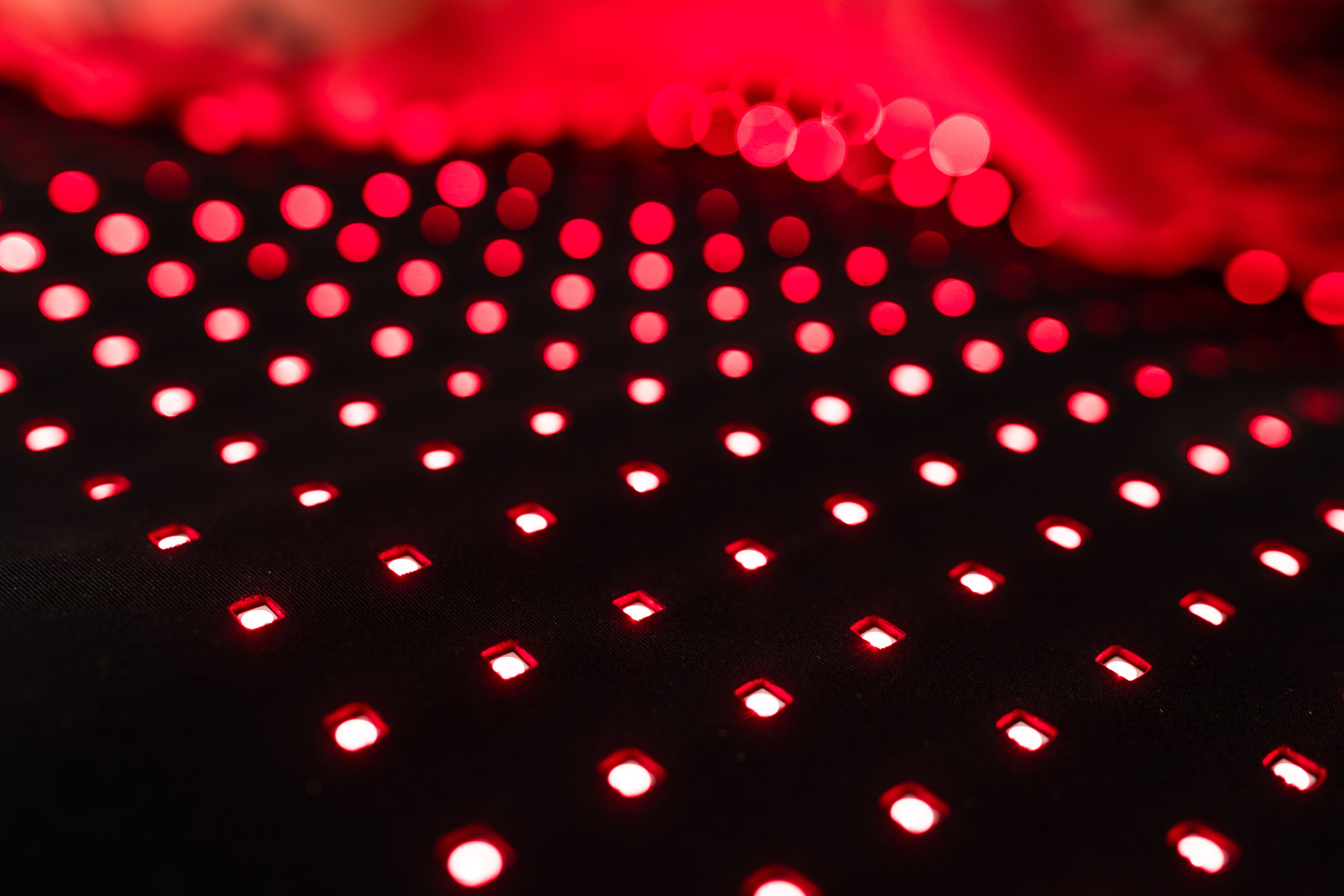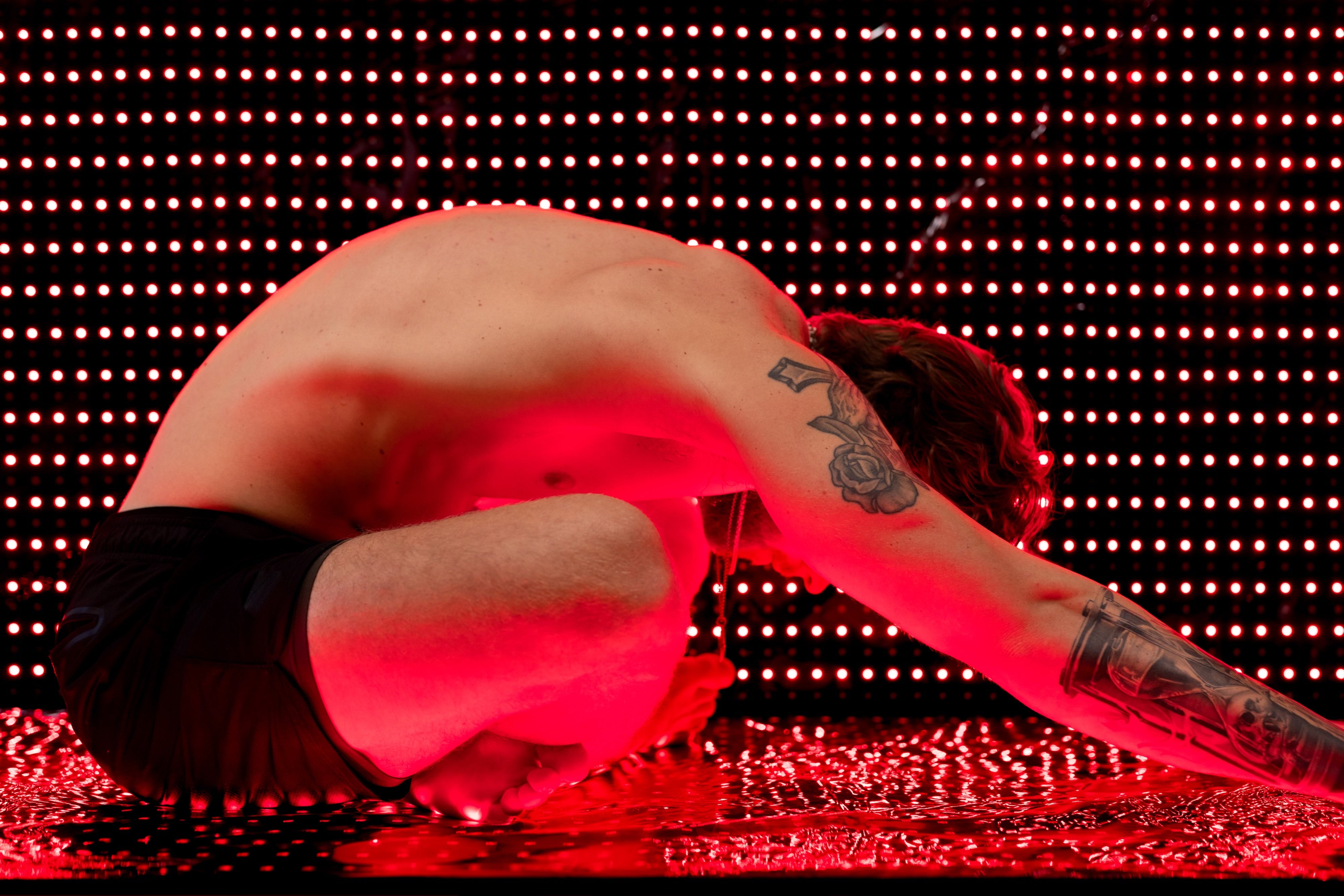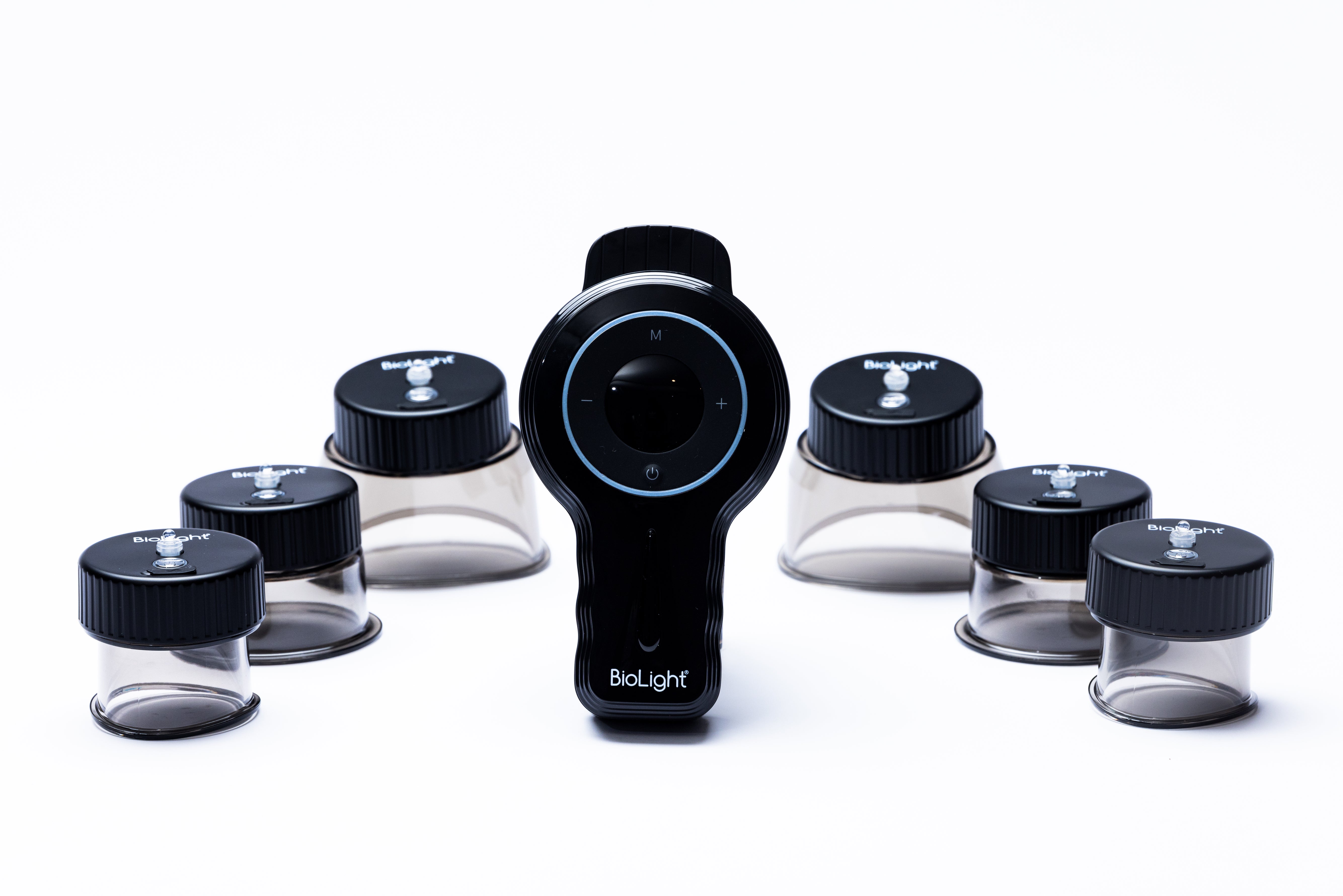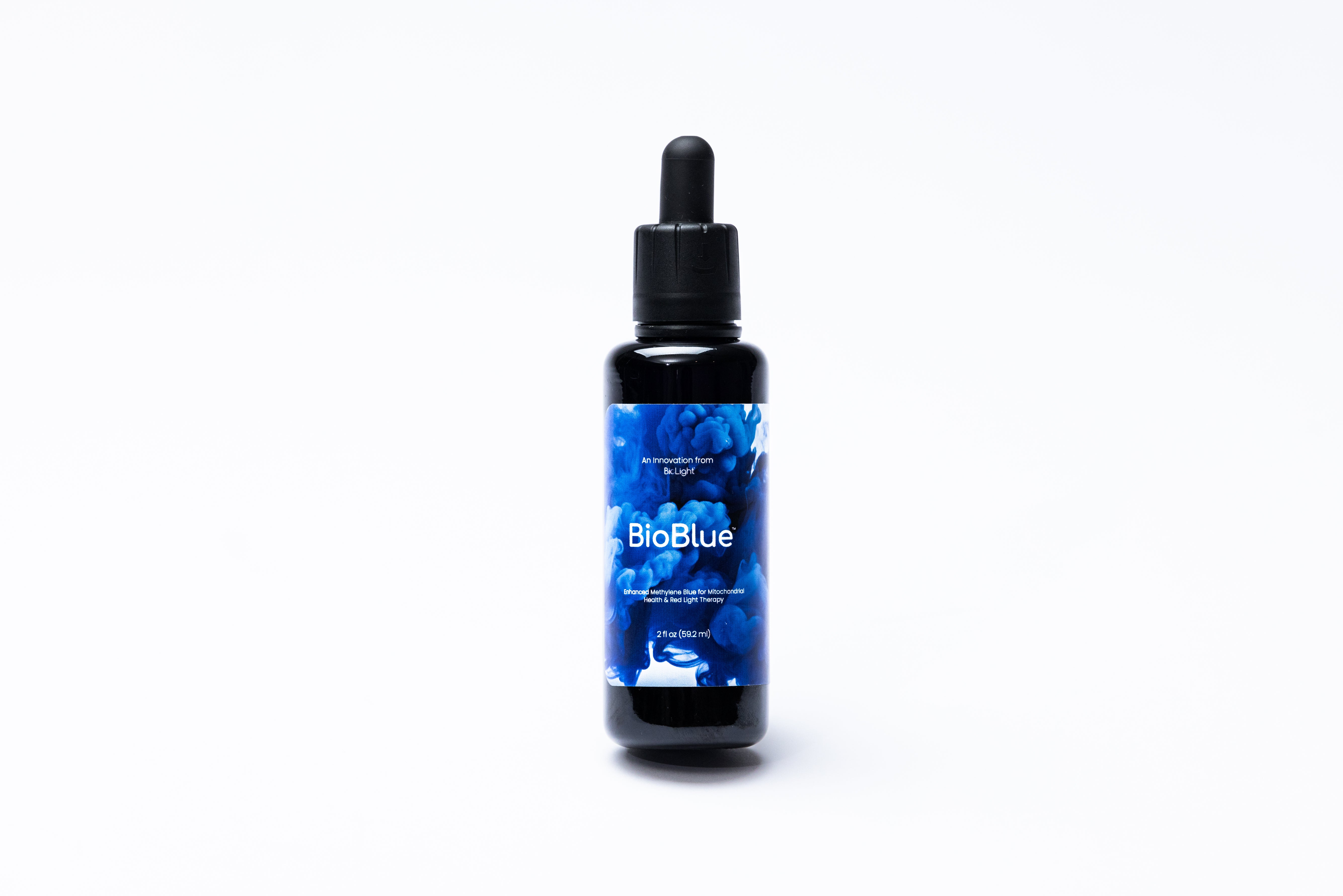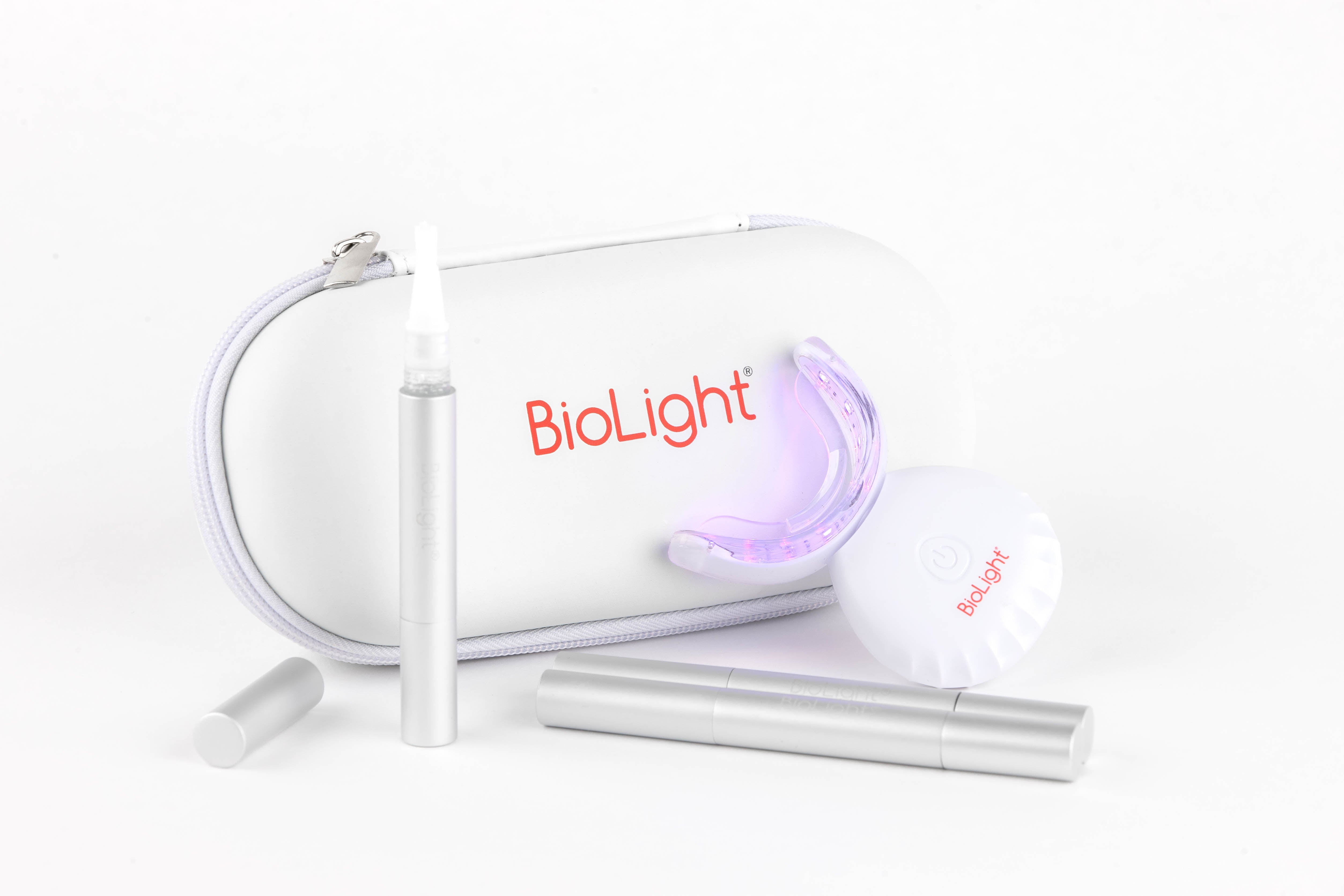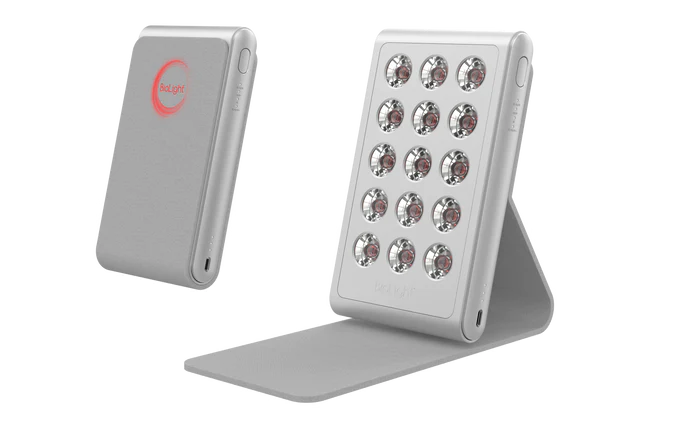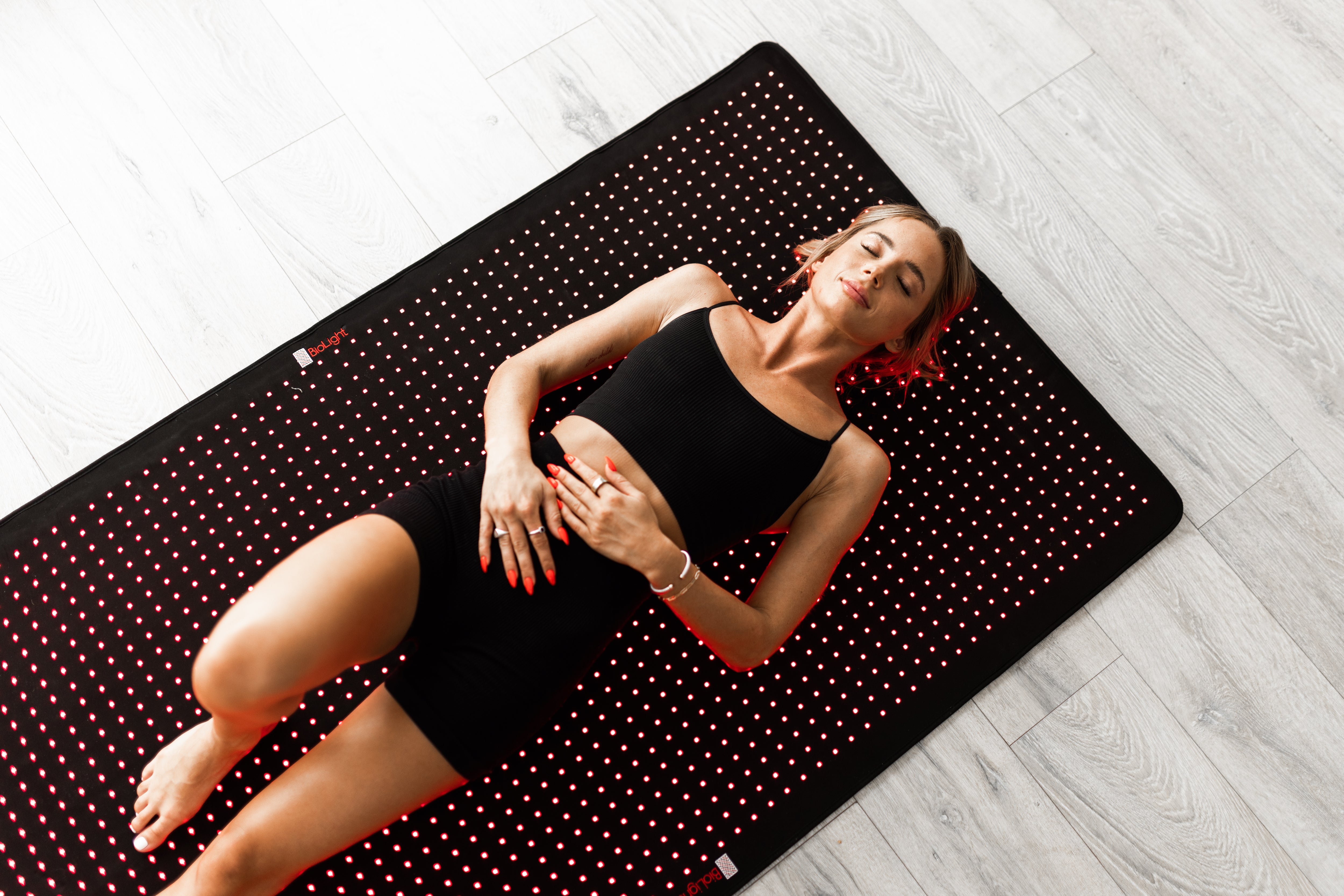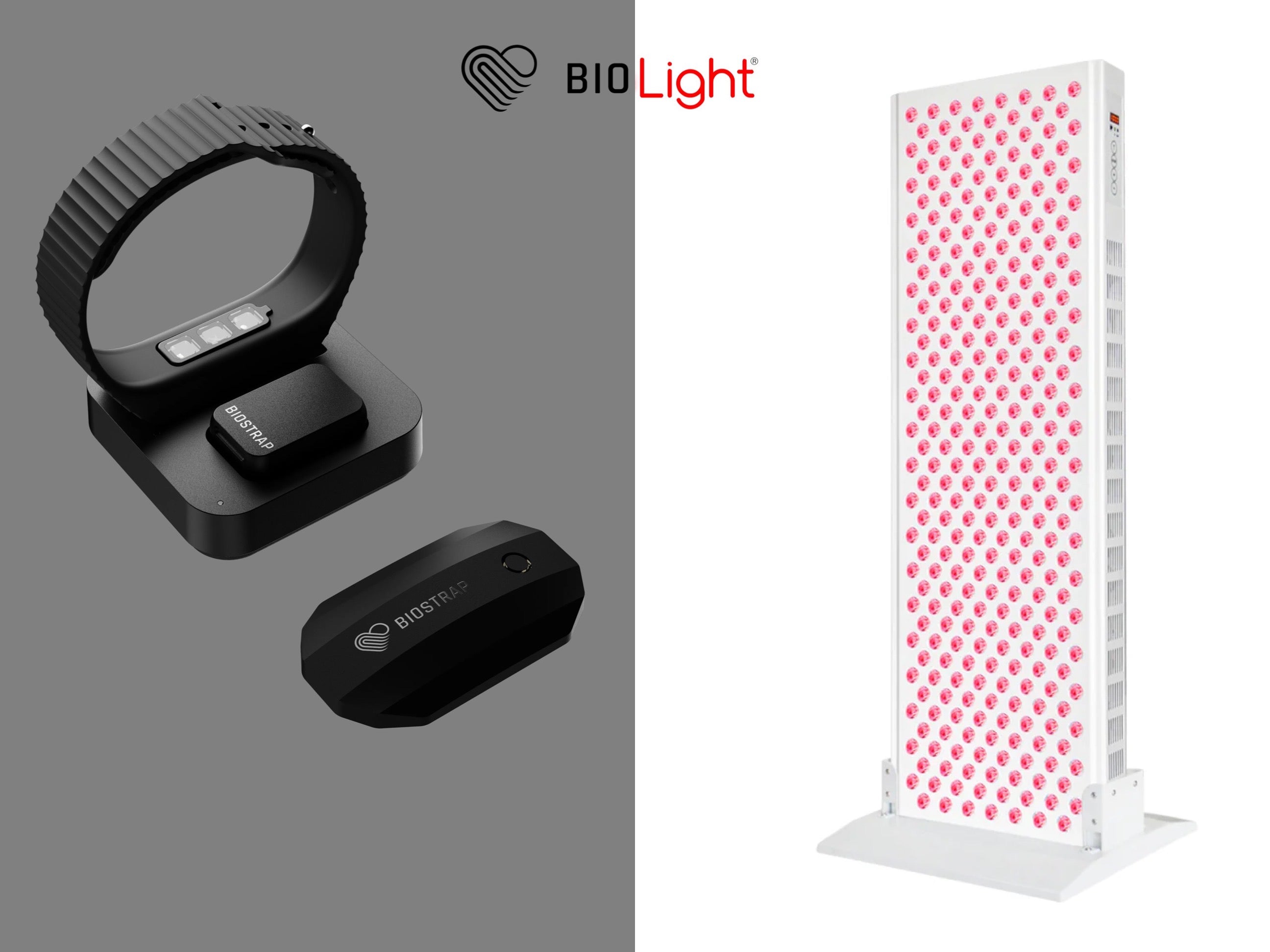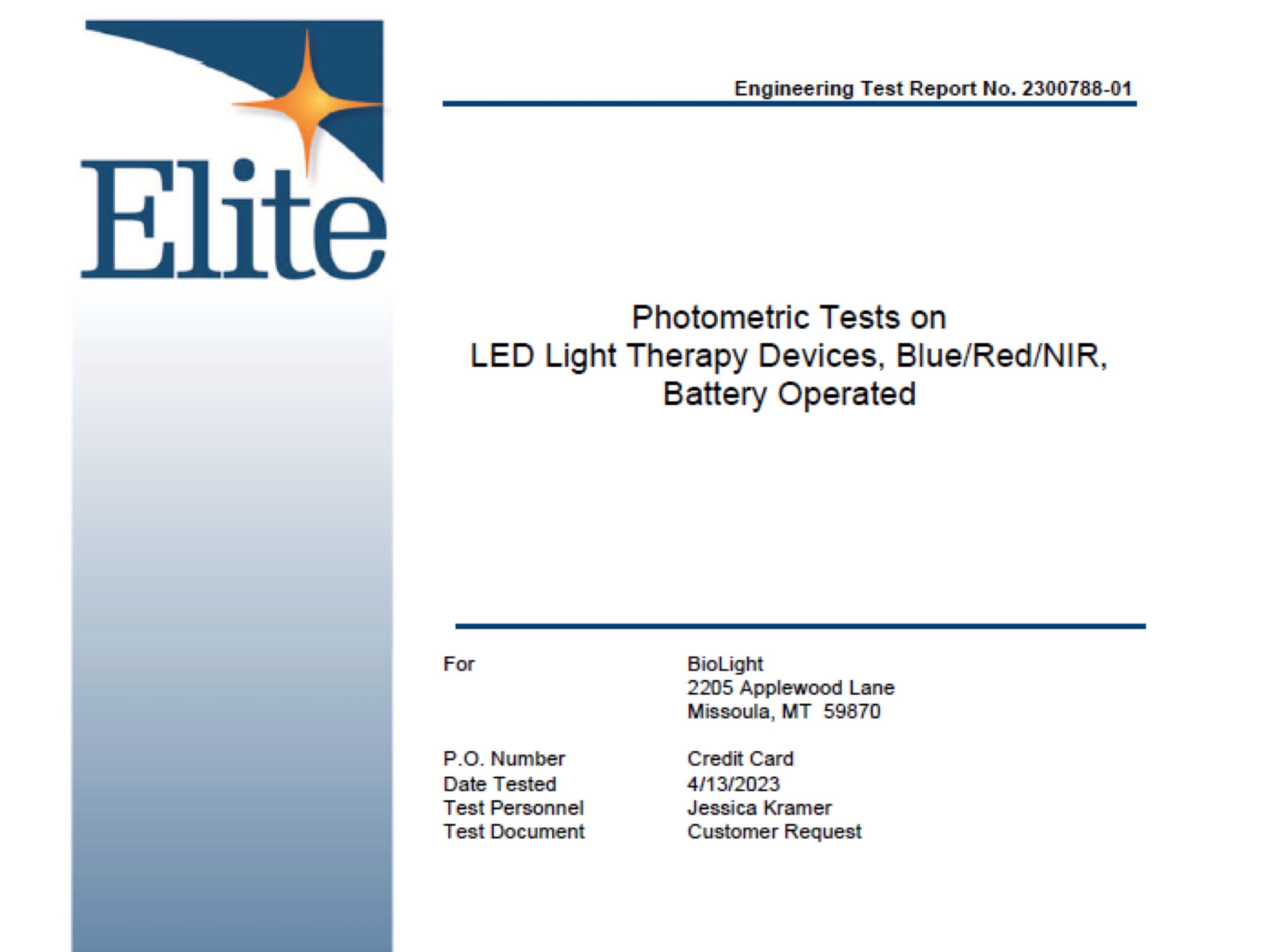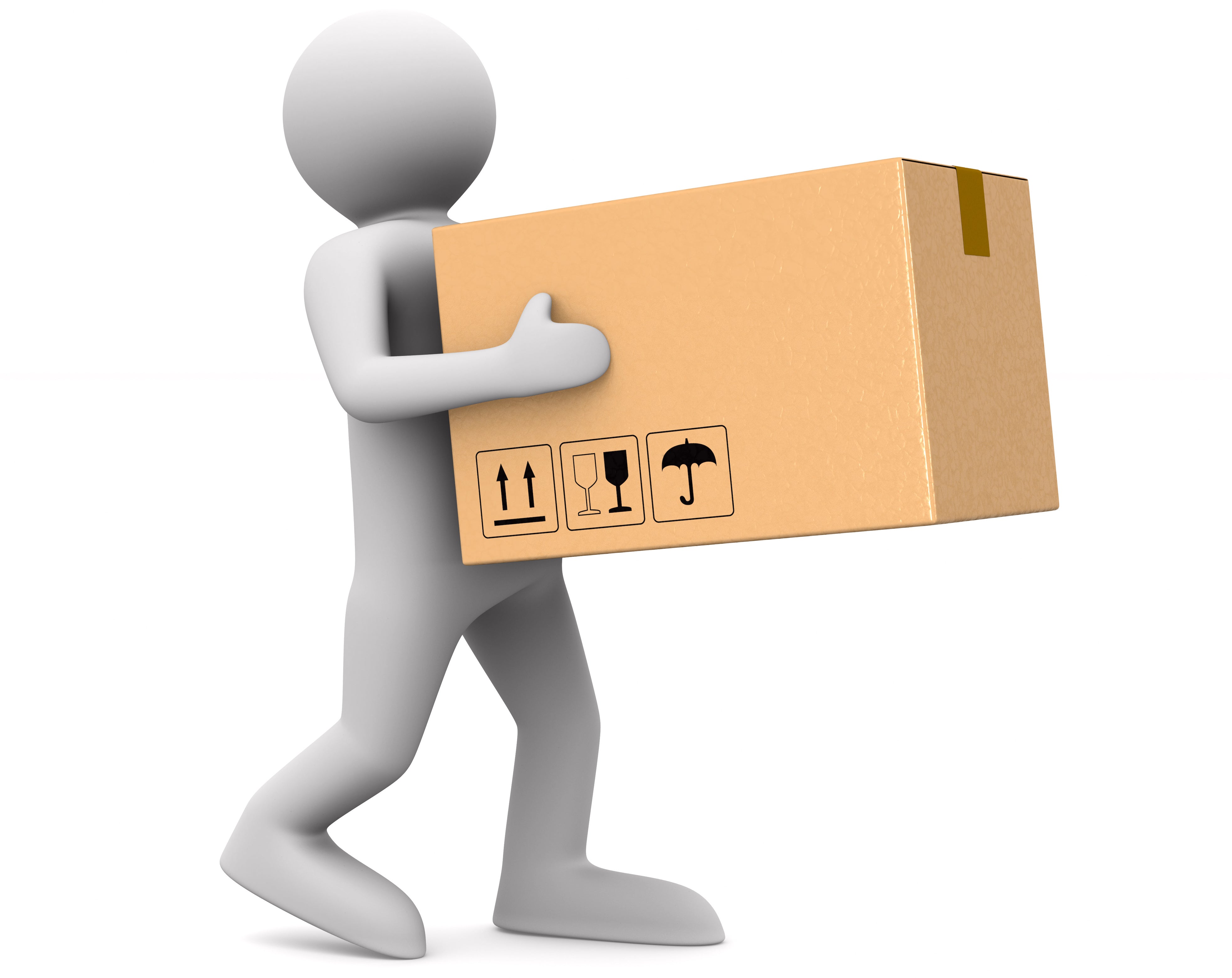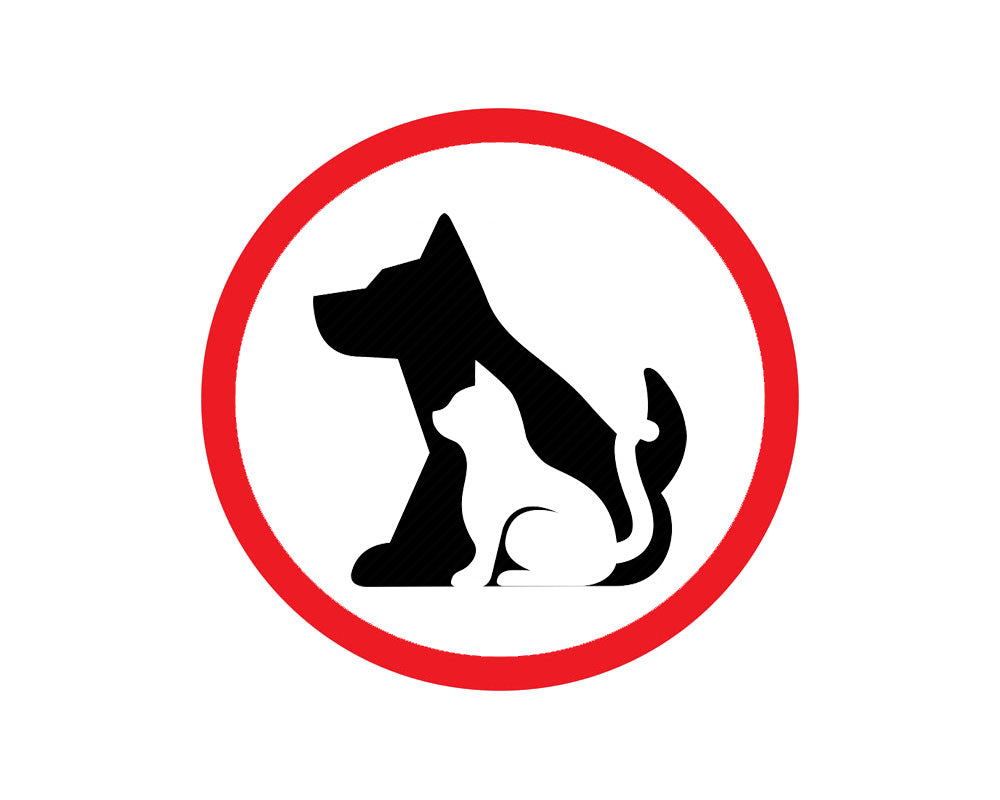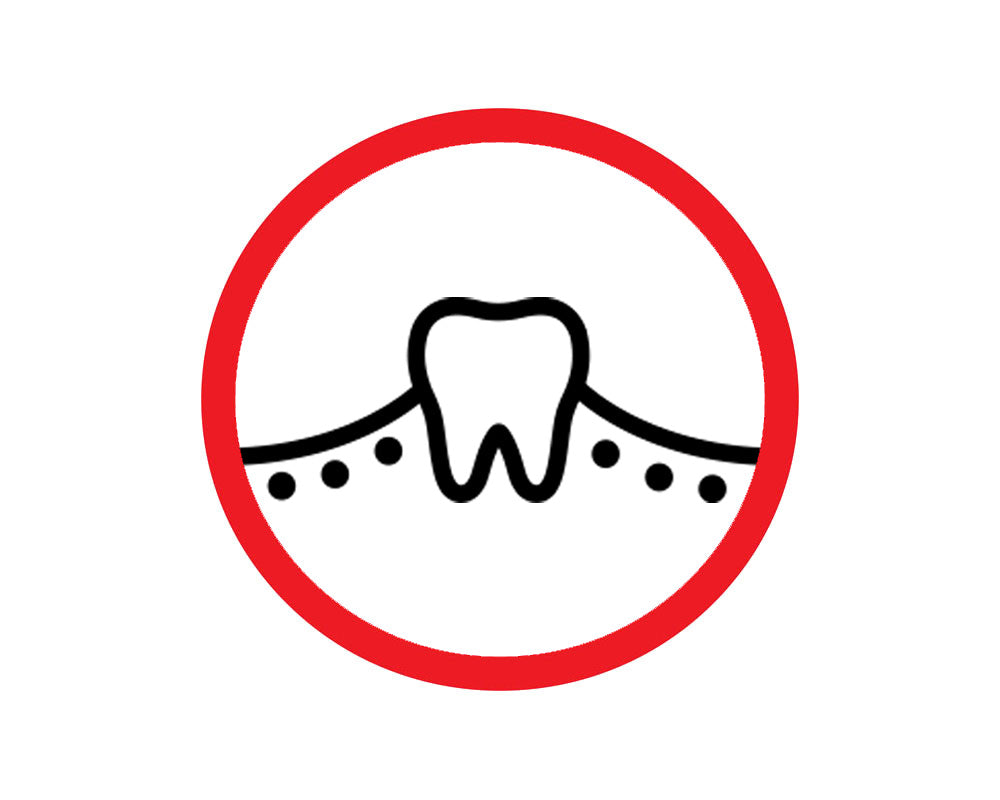How does RLT help?
Pain is a very complex condition that manifests itself in a variety of different forms. With that being said, all pain is caused by two main factors: inflammation and poor micro-circulation.
Inflammation sensitizes the nerves in the area of injury, thus making everything innervated by that nerve more prone to being tender, irritable and painful. Compromised micro-circulation, whether circulation to the nerve or muscle, leads to a lack of oxygen and nutrients, causing a lower threshold for pain signals to be sent to the brain.
By decreasing inflammation and/or improving blood flow to the area of discomfort, the pain signals and, thus, the pain decreases. This is exactly how red/NIR light therapy (RLT) can help reduce pain of all types.

Tell me more...
There is a such profound mind-body connection when it comes to pain that one could argue pain is more mentally debilitating than physically. Unfortunately, pain is so ubiquitous today, especially as the aging population continues to grow, and the typical answer is to turn to drugs and pain killers. If your pain could be significantly reduced or disappear, how liberating would that be?
Inflammation is the main culprit when it comes to pain. Thus, an effective anti-inflammatory will surely reduce most, if not all, types of pain. Research consistently demonstrates that red/NIR light therapy (RLT) is effective at reducing inflammation wherever mitochondria are present, which is EVERYWHERE! That means, RLT should have a positive effect for most, if not all, pain.
Pain is also effectively modulated by RLT through various mechanisms: changes in tissue opioid receptors, changes in substance P (involved in transmission of pain) and disruption of nerve transmission and pain sensation. Again, the end result is decreased pain signals sent to the brain!
Studies have revealed that RLT can produce anti-inflammatory effects that are comparable to non-steroidal anti-inflammatory drugs (NSAIDS), but without the negative side effects of degrading your stomach lining and small intestines.
And just like RLT helps improve fat loss by improving circulation to the fat cells lacking blood flow, RLT improves micro-circulation at the site of pain, improving nourishment to the nerves and muscles. End result = less pain.
Red/NIR light has been shown to be beneficial for, but not limited to, the following conditions: low back pain, knee pain, neck pain, plantar fasciitis, tennis elbow, fibromyalgia, osteoarthritis, chronic tooth pain, sacroiliac joint pain, tendinitis/myofascial pain and chronic joint disorders.

What does the research show?
“Our results support the use of PBM as an analgesia adjuvant tool, that contributes to the multimodal pain management concept and might reduce adverse drug effects by decreasing postoperative pain.” (1)
“The findings of this study showed that photobiomodulation and physiotherapy can reduce chronic neck pain and its different aspects and the effect of laser therapy was significantly higher than physiotherapy.” (2)
"This meta-analysis presents evidence that LLLT (low-level laser therapy) is an effective treatment modality to reduce pain in adult patients with musculoskeletal disorders." (3)
"This meta-analysis indicates that the LLLT in patients with plantar fasciitis significantly relieves the heel pain and the excellent efficacy lasts for 3 months after treatment." (4)
"In conclusion, PBMT (photobiomodulation therapy) applied before a simulated soccer match proved to be effective in attenuating the hamstrings’ muscle fatigue. These findings support PBMT as a promising tool to prevent hamstring strain injury in soccer players." (5)
"This systematic review suggests that LLLT effectively relieves pain and improves functional outcomes in patients with TMD (temporomandibular disorder)." (6)
"LLLT reduces pain immediately after treatment in acute neck pain and up to 22 weeks after completion of treatment in patients with chronic neck pain.” (7)
"Photobiomodulation, also known as low-level laser therapy, is a rapidly growing approach to stimulate healing, increase tissue regeneration and reduce pain and inflammation." (8)
"The overall positive short-term clinical studies in addition to strong laboratory studies should give the clinical confidence that low-level laser therapy (LLLT) may be beneficial for many individuals suffering from musculoskeletal pain, regardless of the cause." (9)
**While the current scientific research seems to indicate many positive benefits of RLT in relation to pain relief, there is still an appreciable necessity for more extensive research to be conducted in this area, including double-blind RCT (randomized controlled trials), to provide a more comprehensive, robust overview that will further elucidate the optimal parameters and appropriate uses of RLT, which will ultimately lead the most safe & efficacious uses for individuals seeking pain relief.
Citations
(1) de Rezende, Marcia Uchoa et al. “Pilot study of the effect of therapeutic photobiomodulation on postoperative pain in knee arthroplasty.” Brazilian journal of anesthesiology (Elsevier) vol. 72,1 (2022): 159-161. doi:10.1016/j.bjane.2021.07.040
(2) Kenareh, Rahele et al. “The Comparison of The Efficacy of Photobiomodulation and Ultrasound in the Treatment of Chronic Non-specific Neck Pain: A Randomized Single-Blind Controlled Trial.” Journal of lasers in medical sciences vol. 12 e20. 17 May. 2021, doi:10.34172/jlms.2021.20
(3) Clijsen, Ron & Brunner, Anina & Barbero, Marco & Clarys, Peter & Taeymans, Jan. (2017). Effects of low-level laser therapy on pain in patients with musculoskeletal disorders. A systemic review and meta-analysis. European journal of physical and rehabilitation medicine. 53. 10.23736/S1973-9087.17.04432-X.
(4) Wang, Wei & Jiang, Weifeng & Tang, Chuanxi & Zhang, Xiao & Xiang, Jie. (2019). Clinical efficacy of low-level laser therapy in plantar fasciitis: A systematic review and meta-analysis. Medicine. 98. e14088. 10.1097/MD.0000000000014088.
(5) Pinto Dornelles, Maurício & Fritsch, Carolina & Chaida Sonda, Francesca & Scott Johnson, Douglas & Cesar Pinto Leal-Junior, Ernesto & VAZ, MARCO & Baroni, Bruno. (2019). Photobiomodulation therapy as a tool to prevent hamstring strain injuries by reducing soccer-induced fatigue on hamstring muscles. Lasers in Medical Science. 10.1007/s10103-018-02709-w.
(6) Xu, Gang-Zhu & Jia, Jie & Jin, Lin & Li, Jia-Heng & Wang, Zhan-Yue & Cao, Dong-Yuan. (2018). Low-Level Laser Therapy for Temporomandibular Disorders: A Systematic Review with Meta-Analysis. Pain Research and Management. 2018. 1-13. 10.1155/2018/4230583.
(7) Chow, Roberta & Johnson, Mark & Lopes-Martins, Rodrigo Alvaro & Bjordal, Jan. (2009). Efficacy of low-level laser therapy in the management of neck pain: a systematic review and meta-analysis of randomised placebo or active-treatment controlled trials. Lancet. 374. 1897-908. 10.1016/S0140-6736(09)61522-1.
(8) Sousa, Marcelo & Kawakubo, Masayoshi & Ferraresi, Cleber & Kaippert, Beatriz & Mateus Yoshimura, Elisabeth & Hamblin, Michael. (2018). Pain management using photobiomodulation: Mechanisms, location, and repeatability quantified by pain threshold and neural biomarkers in mice. Journal of Biophotonics, 11. e201700370. 10.1002/jbio.201700370.
(9) B Cotler, Howard. (2015). The Use of Low Level Laser Therapy (LLLT) For Musculoskeletal Pain. MOJ Orthopedics & Rheumatology. 2. 10.15406/mojor.2015.02.00068
